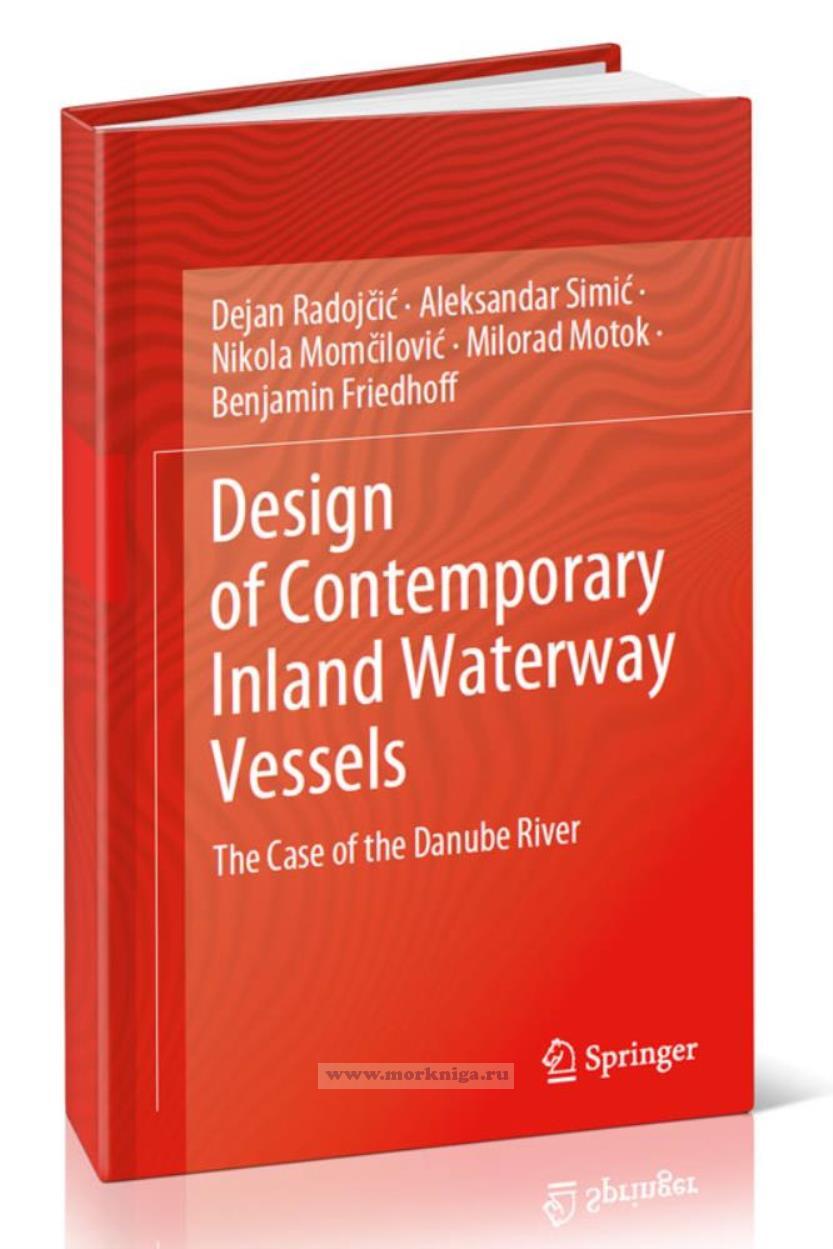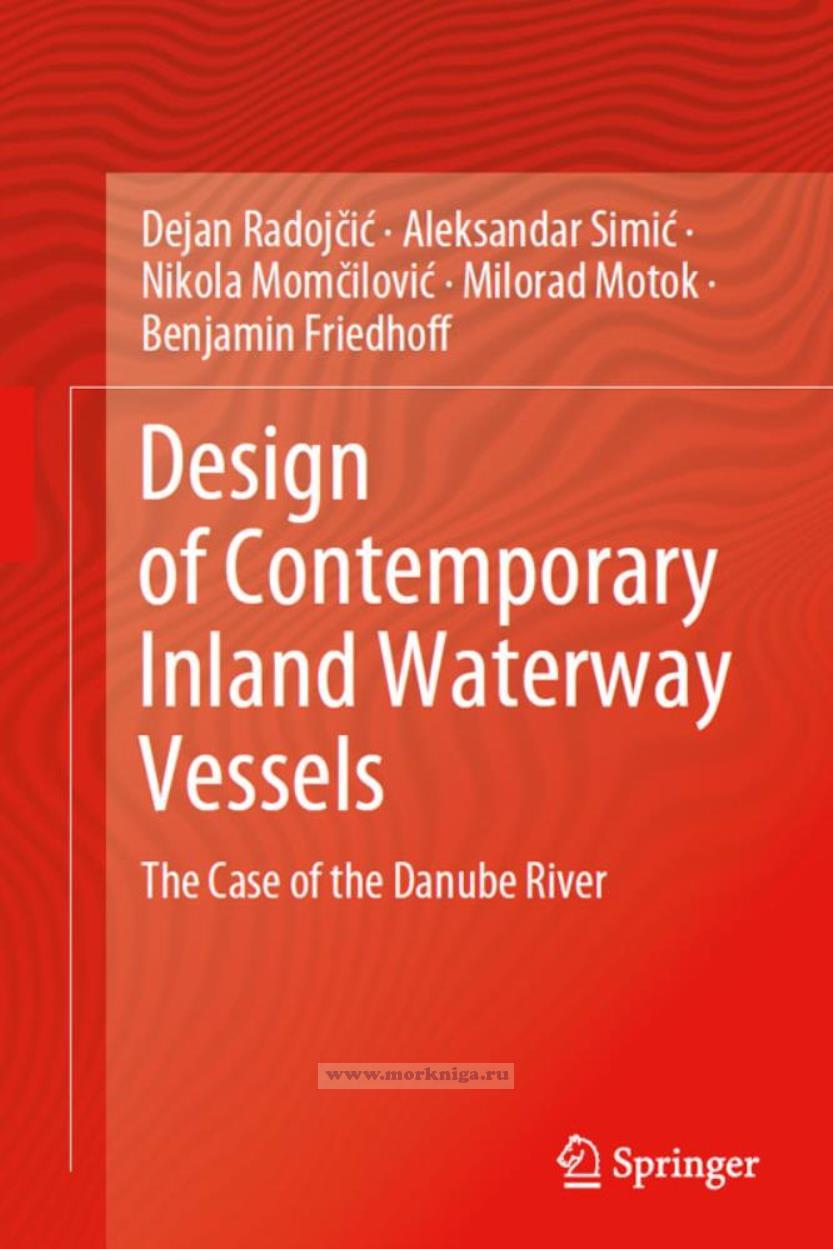Сб с 10 до 16
Design of Contemporary Inland Waterway Vessels. The Case of the Danube River/Проектирование современных судов внутреннего плавания. Пример реки Дунай
Книга на английском языке
Inlandwaterway (IW) or river vessels are in every respect different from the seagoing ships. The professional literature is mostly focused on conventional seagoing fleets, leaving a gap in the documentation of design practices for IWvessels. The principal attribute that differentiates river vessels from the seagoing ships is the low, or shallow, draught due to water depth restrictions.
This book addresses key aspects for design of contemporary, shallow draught IW vessels for the transport of dry cargo (containers and bulk cargo). Most of the logic that is presented is applicable to the design of river vessels for any river, but the material that is presented is focused on vessels for the River Danube and its tributaries.
Contents
1 Introduction
1.1 Background: Strategies and Statistics Relevant for European IWT
1.2 Book Arrangement
References
Part I Factors That Influence the Design of Contemporary Danube Vessels
2 The Danube Waterway with Its Tributaries
2.1 Impacts of Climate Change
2.2 What is an Optimal Contemporary IW Ship?
2.3 Waterway Implications on Ship Design
2.4 Restrictions of the Danube Waterway
2.5 Concluding Remarks
References
3 Intermodality and IWT
3.1 Lo-Lo and Ro-Ro Technologies
3.2 State-Of-The-Art of Intermodal Loading Units (ILU)
3.3 The Hinterland
3.4 Comparison of Ro-Ro and Lo-Lo Technologies for the Danube
3.5 Concluding Remarks
References
4 Waterborne Transport-Representative Ship Types
4.1 Background
4.2 Pushed Convoys
4.3 Selfpropelled Vessels
4.4 Concluding Remarks
References
5 Overview of Regulatory Framework from a Viewpoint of the Design of Danube Vessels
5.1 Introduction
5.2 Classification
5.3 Statutory Regulations
5.4 Other Noteworthy International Documentation on the Danube
5.5 Concluding Remarks
References
6 Transport Efficiencies and Performance Indicators
6.1 Background of Energy Efficiency Indicators
6.2 Energy Efficiency Indicators for IW Vessels
6.3 Economic Indicators
6.4 Concluding Remarks
References
Part II Design Guidelines with the Basics on Shallow Water Hydrodynamics
7 Basics on Inland Waterway Vessel Hydrodynamics
7.1 Introduction
7.2 Shallow Water Resistance
7.3 Propulsive Efficiency in Shallow Water
7.4 Power Evaluation
7.5 Squat
7.6 Wash
7.7 Manoeuvrability
7.8 Concluding Remarks
References
8 Essential Expressions and Design Guidelines for the Preliminary Design of IW Vessels
8.1 Introduction
8.2 Hull Form-Design Guidelines
8.3 Note on Stability and Safety
8.4 Power Evaluation
8.5 Squat
8.6 LightshipWeight Estimation
8.7 Design Recommendations for Conventional Selfpropelled Container Vessels
8.8 Worked Examples
8.9 Concluding Remarks
References
Part III Innovative Technologies and Design Solutions for Contemporary Inland Waterway Vessels
9 Technologies for Improvements of Energy Efficiency and Environmental Performance
9.1 Introduction
9.2 Innovations in Propulsion Plants and Fuels
9.3 Improvements in Hull Resistance
9.4 Innovations in Propulsion, Transmission and Steering .
9.5 Innovations in Ship Structure
9.6 Innovations Important for Better Ship Utilization
9.7 Concluding Remarks
References
10 Concepts of Contemporary and Innovative Vessels
10.1 Vessels Concepts in Various Research Projects
10.2 Concepts of Built Advanced IW Vessels
10.3 Proposed Concepts for the Danube River
10.4 Concluding Remarks
References
11 Conversion and Retrofitting Options
11.1 Introduction
11.2 Retrofitting: New Engines and Propulsors
11.3 Conversions: Lengthening and Hull Improvements
11.4 Numerical Example of Retrofitting and Conversion
11.5 Application of State-of-the-Art Technologies
11.6 Concluding Remarks
References

